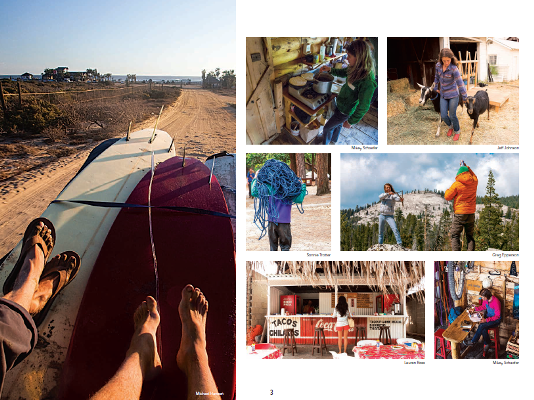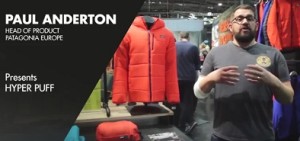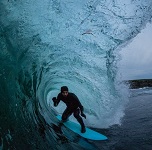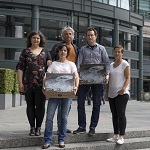
To be considered essential, any Patagonia® sportswear style must first embody enduring quality, versatility and simplicity. The
design should be timeless, not subject to the whims of fashion.
But an essential Patagonia sportswear piece must also be responsibly made—above all durable, but also made of materials that are environmentally preferable to conventional alternatives. Uncommon but nonetheless essential practices include our use of organic cotton, recycled polyester, hemp, and two responsible-sourcing initiatives: bluesign® approved chemistry and Fair Trade certification—because the people who build the garment should, at minimum, work in safe conditions with good environmental practices and be paid a fair wage.
For Spring 2015, we took a hard look at the men’s and women’s sportswear collections to ensure that every style, new and returning, meets these criteria. Every piece is essential.
RECYCLED POLYESTER
Patagonia adopted fleece made from post-consumer recycled plastic soda bottles into our product line in 1993. It was the first outdoor clothing manufacturer to do so and has since expanded its inputs to include manufacturing waste and worn-out garments (including its own). Using recycled polyester lessens our dependence on petroleum as a source for raw materials, curbs discards, reduces toxic emissions from incinerators, and causes less air, water and soil contamination than the use of nonrecycled polyester.
15 styles in the Spring/Summer 2015 sportswear line feature recycled polyester.
ORGANIC COTTON
How much difference could it make to use only 100 percent organic cotton in cotton clothing? Tons. Cotton is a “natural” fiber, but conventionally grown cotton is one of the most toxic crops on the planet. Organic cotton, on the other hand, is grown without harmful chemicals. It supports biodiversity, healthy ecosystems, improves soil quality and often uses less water. In 1996, Patagonia began the exclusive use of organically grown cotton in all of its cotton products—a commitment the company proudly honors to this day. 0 styles in the Spring 2015 sportswear line use onventionally grown cotton.

HEMP
Hemp requires no irrigation, uses no pesticides or synthetic fertilizers and is harvested and processed by hand. It’s one of the most durable natural fibers on the planet. Cultivation of hemp improves soil health, and farmers can plant food crops in the same field immediately after a hemp harvest without a fallow period. In this way, farmers can grow cash crops and food crops on the same land.
5 styles in the Spring/Summer 2015 sportswear line feature hemp fabric.
FAIR TRADE
For every Patagonia® Fair Trade Certified™ style sold, the company pays a premium directly into a special workers’ fund. The workers decide collectively how to spend this fund, based on what they deem to be their greatest needs: from scholarships and disaster relief, to medical care and transportation, or as a cash bonus, which can be equivalent to an entire month’s salary or more. Fair Trade certification is an important new way for Patagonia to help improve the lives of workers who help produce our clothing.
Patagonia tripled the number of Fair Trade Certified styles in the Spring 2015 line.
bluesign® CRITERIA
Based in Switzerland, bluesign® technologies audits the energy, water and chemical usage of its system partners and helps them achieve continuous, longterm environmental improvement. Patagonia has worked with bluesign since 2000 to evaluate and reduce resource consumption and to screen raw materials, including dyes and finishes, used in our supply chain. The term “bluesign® approved”
identifies chemical products, textiles, accessories and garments that meet the bluesign criteria.
41% of the Spring 2015 sportswear line features bluesign approved fabric.
INFO: Patagonia










